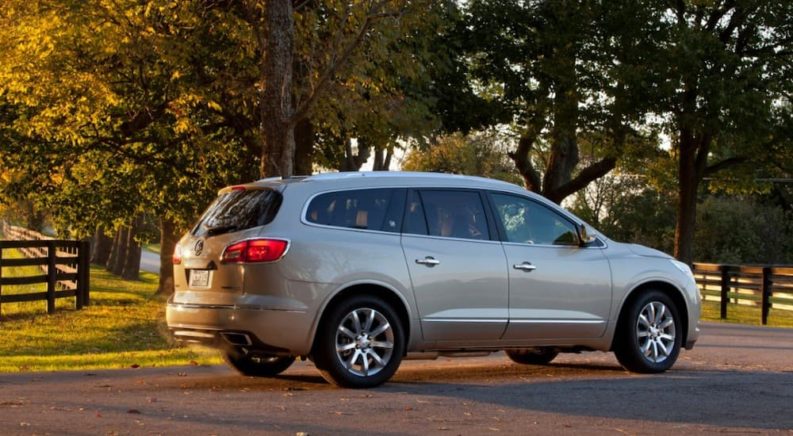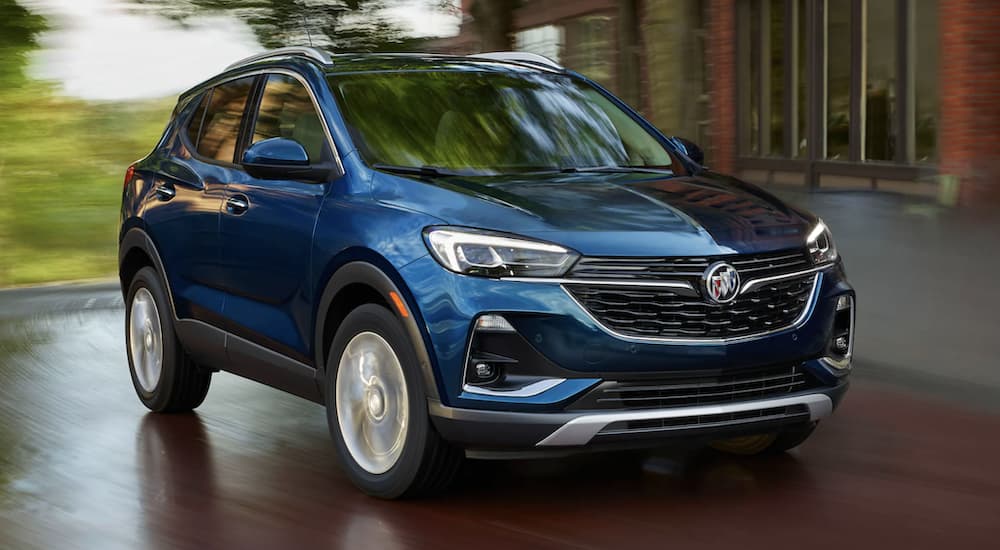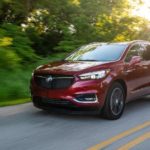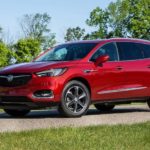The SUV holds a unique position in the automotive industry, and the history and development of the vehicle are just as fascinating. What began as a large and foreboding mass of metal and excessive powertrains have evolved into family-friendly and compact choices for the discerning consumer. This evolution that could be described as domestication and palatability is nowhere more apparent than the timeline that constitutes the SUV manufactured by Buick. Over the past two decades, we’ve seen the brand undergo various changes. Arriving at a time when the SUV was gaining popularity, Buick has shown an aptitude for changing with the times and implementing more luxurious amenities to appeal to consumers who want luxury at a slightly lower price than the European offerings. Here, we will turn back the pages of history as we examine the past, present, and possible future of Buick SUVs.
2002-2007: The Rendezvous and Rainier Arrive
2002 seems like only yesterday. Two years into the new millennium, the SUV had begun transitioning from the larger models to the scaled-down vehicles that are popular today. As the focus of the family vehicle turned from the minivan and station wagon to the SUV, the Buick Rendezvous and its sibling, the Pontiac Aztek, arrived on the scene. Built on the same chassis as a minivan, the Rendezvous seemed to be the perfect compromise between the outgoing family vehicles of the previous decade and the options for a new breed of driver.
The Rendezvous provided consumers with the type of performance one might find in a pickup truck, the storage capabilities of a minivan, and the amenities and comfort one might find in a luxury sedan. While this trifecta seemed all too perfect on paper, it didn’t lend itself to the aesthetic and style of the vehicle. The Rendezvous had the outward appearance of a minivan but made quite an impression upon its debut. Equipped with a 3.4L V6 and seating for seven, the Rendezvous was practical and effective, while the available AWD made for increased versatility. Over the next few years, the vehicle received some prominent upgrades, including OnStar services, a leather-wrapped steering wheel, and an onboard navigation system.
In the first five years of its existence, the vehicle sales topped 60,000 three times, with 2003 being the most successful year with over 72,000 units purchased. While these numbers were impressive, the same couldn’t be said for the Rendezvous’ partner in crime, the Buick Rainier, which arrived for the 2004 model year.
The Rainier can be seen as a changing trend in the SUV market. While the Rendezvous was scaled down from the larger predecessors that came before it, the Rainier was larger and had a substantially sizeable powertrain. The Rainier offered two distinctive engine offerings. An inline six-cylinder with 275 hp and a 5.3L V8 producing 290 hp. The vehicle got off to a slow start and sold less than 5,000 units in 2003. While this figure rose to over 24,000 the following year, it never sold as well at the Rendezvous, selling less than 50,000 units total in its entire run. By 2007, both vehicles would cease production.
2008-2012: And Then There Was One
With the dissolution of both the Rendezvous and the Rainier, Buick went back to the drawing board to perfect their previous designs. The result of this innovation was the Buick Enclave, arriving for the 2008 model year. The Enclave would not only replace both of its predecessors but also surpass them in many ways. One of the key differences between the Enclave and the models that came before it wasn’t found in the performance or comfort of the vehicle but in the foundation that it was built. The Rendezvous had been built upon a minivan platform and the Rainier upon a truck. The Enclave would share the same platform as the Chevy Traverse and GMC Acadia.
The first generation of the Enclave seemed to correct and develop upon Buick’s previous designs. The Rendezvous and Rainier had both been equipped with a four-speed automatic transmission. The Enclave upped its performance by offering a six-speed. A 3.6L V6 was now the sole engine. It had an admirable horsepower output of 275, which was later increased to 288 in 2009. The Enclave offered a sleek and refined style and interior that offered drivers the benefits of Lincoln and BMW for a competitive price. As the sole SUV offering from Buick, the Enclave might have been the one and only, but a new arrival was imminent.
2013 – Present: And the Beat Goes On…
As the Buick Enclave gave the brand a renaissance with its SUV lineup, consumers would soon be delighted at the onset of the arrival of a new addition to the fleet. The Buick Encore debuted for the 2013 model year. It was the perfect example of the changes in the SUV coming full circle. The subcompact SUV was a far cry from the larger vehicles that had come before it when Buck first developed their fleet. GM had recently undergone some significant changes, with the dissolution of Oldsmobile, Hummer, Pontiac, and Saturn. The Encore might have been scaled down in size, but it had more than enough to offer the average consumer.
Gone were the large powertrains, and in its place was an economical 1.4L turbocharged inline four-cylinder engine that packed a punch in the form of 138 hp. While performance-oriented enthusiasts might have been curious about a smaller engine, no one could argue with the vehicles more than conservative fuel consumption, which came in the form of an estimated 25 MPG while driving within the city limits and 33 MPG on the highway.
2018 would mark the second generation for Encore’s older sibling, the Enclave. The new generation featured a bold new exterior, described as “sleek and aerodynamic.” The luxurious appearance was still present, both inside and out. The Enclave was also granted a performance upgrade in the form of a new 3.6L V6 producing 310 hp and a nine-speed transmission to optimize performance. Changes continue to be applied, as a 2022 refresh saw several driving assistance and safety features added to Buick’s flagship SUV.
The Encore continued its prominence; in 2019, the vehicle sold over 100,000 units in the United States alone. Buick didn’t rest on their laurels when it came to perfecting the fleet, and the 2020 model year witnessed the arrival of the Encore GX. With the continuing rise in gas prices, Buick found a suitable solution in the form of a three-cylinder engine and a CVT (continuously variable transmission). In 2022, it was announced that the Buick Encore would cease production after the model year. As a result, the Encore GX will carry the flag for Buick as their smaller-sized SUV.
Where Does Buick Go From Here?
As demonstrated, Buick has been able to adapt to the growing needs of consumers and the trends and practices within the industry itself. In their time as a manufacturer, Buick has been able to move with the times and sometimes even be an influence upon them. While it’s unclear where their SUV lineup might travel next, we eagerly await the next step of Buick’s evolution.





